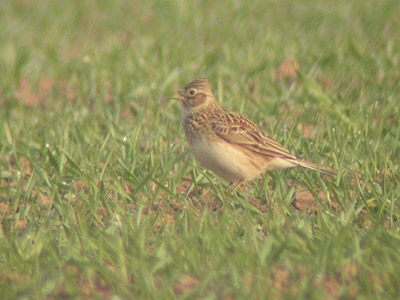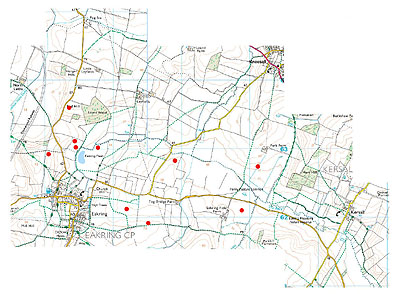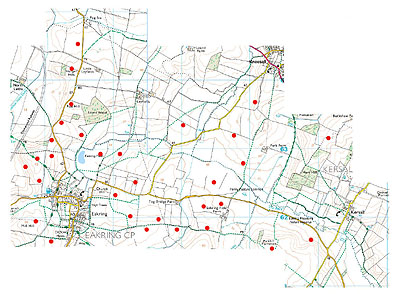

| Sky Lark numbers continue to increase 2005 |
 |
This page
specifically featuring one of the area's most threatened
farmland species, takes a look at yet another bird which
continues to make a comeback in the Eakring and Kersall
area. Since 1998 the Sky Lark has done extremely well, since the initial breeding bird surveys were carried out. Findings over the past seven years have shown the Sky Lark to have increased from just ten breeding pairs in 1998, to a maximum of 39 pairs in 2005. This would equate to an average of 4.875 pairs per square km, if the area's population were evenly spread throughout the area. Yet despite it's great increase in recent years, there are still large sections of the recording area, which fail to support any breeding birds. In 1998, breeding Sky Larks were found chiefly to the west of Eakring Flash, in the Church Hill area, with single pairs at Eakring Field Farm and Park Farm. |
| .... | ||
| All nests were on
cultivated land, but seven nest sites out of the ten were
situated on a slight incline. This suggested that birds
preferred to nest on sites where the soil drained pretty
quickly after rain. With much of the recording area
situated on a clay-based soil, such nest sites would
obviously have a limited availability as standing water
is common on flat areas. There was no particular bias towards which way the incline faced, although one might have expected a southerly situation to be favoured, yet there was no evidence to support this. During the intervening period until the 2005 survey, nesting Sky Larks continued to spread out in all directions from the original survey plots, so that now all suitable areas on an incline are occupied. Land around Eakring village is now probably at the greatest density the breeding population and individual male territiories can hold. |
 |
|
| Right:- The
maps shows how the area's breeding Sky Lark population
has increased in numbers and distribution between 1998
(above) and 2005. The spread continues east of Eakring, roughly following the southern boundary of the recording area at Church Hill and through to Eakring Field Farm. Land south of Kersall is still quite sparsely populated, despite permanent set-aside being created a couple of years ago. It seems very likely that this area will see more Sky Larks moving in and attempt breeding within the nest few years. Perhaps surprisingly at first, Eakring Meadows Nature Reserve has failed to see any colonisation. Although birds have attempted nesting at Penny Pasture Common on two occasions - regular breeding has never taken place there, as adjacent fields have proved more suitable. |
 |
|
| Vegetation length and standing water may be the reason the rest of the reserve has not been used. Regular grazing and subsequent shorter vegetation at Penny Pasture Common, obviously suit Sky Larks better. An important aspect in helping the recovery of Sky Lark numbers, is the availability of permanent grass/meadowland acreage. The Stewardship set-aside scheme obviously helps greatly and will continue to do so over the coming years. | ||